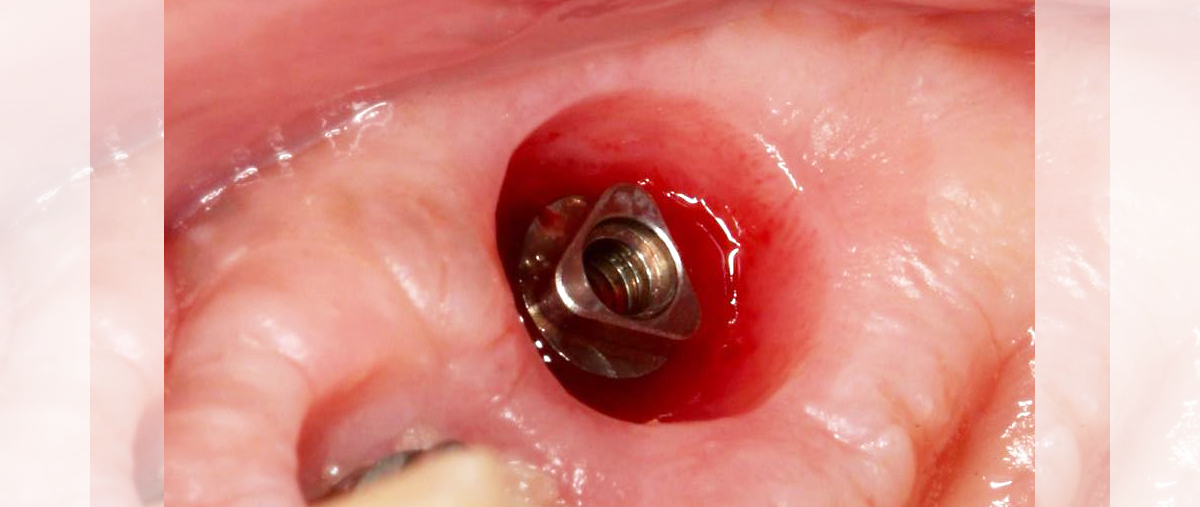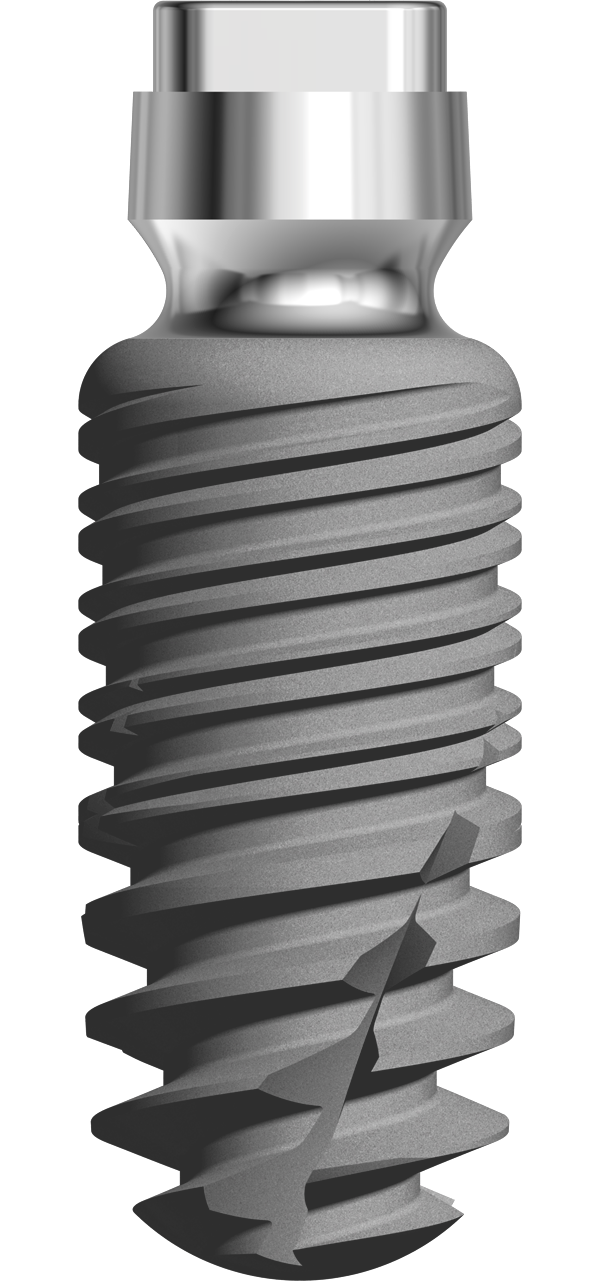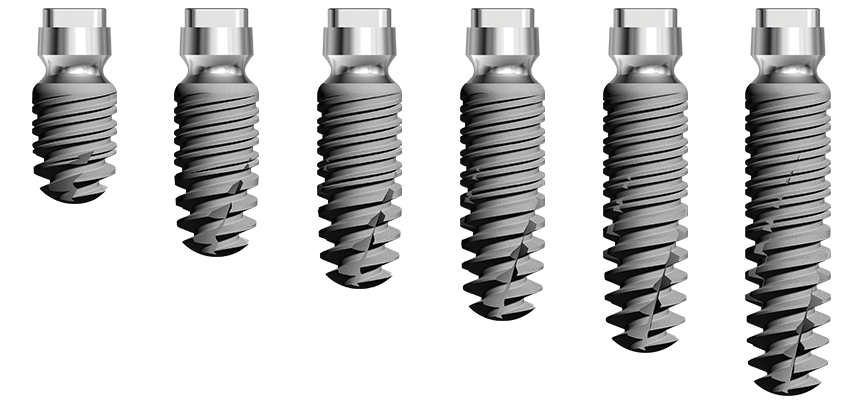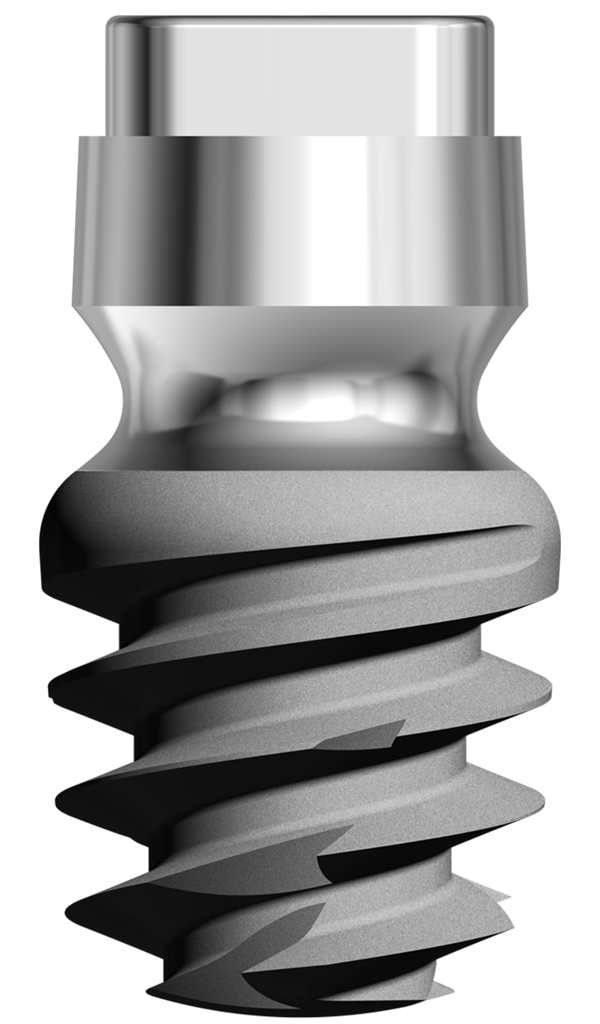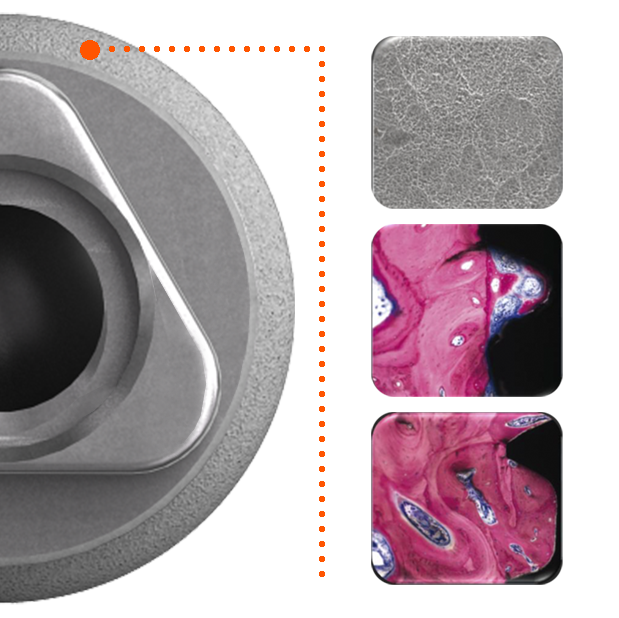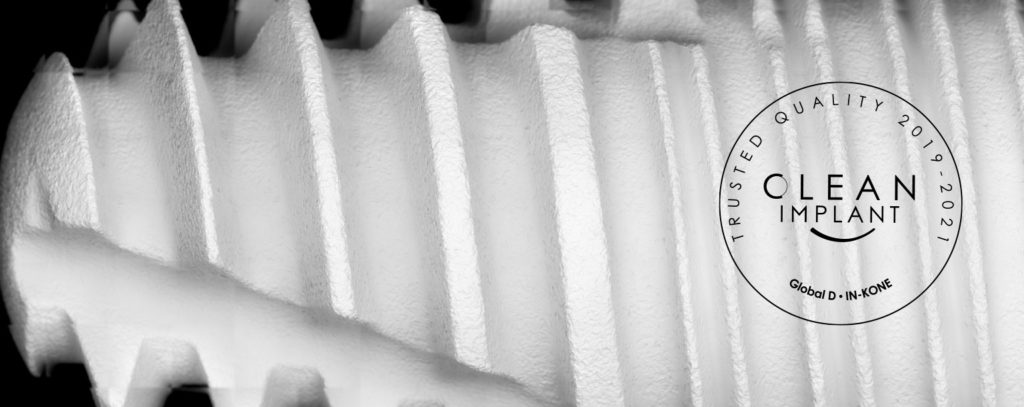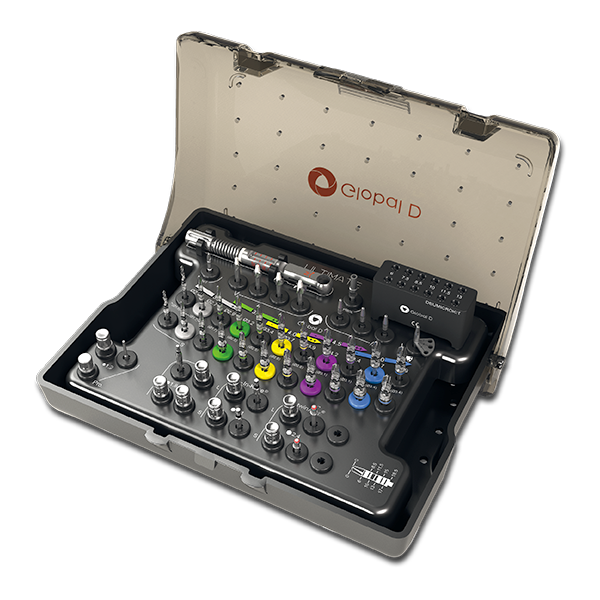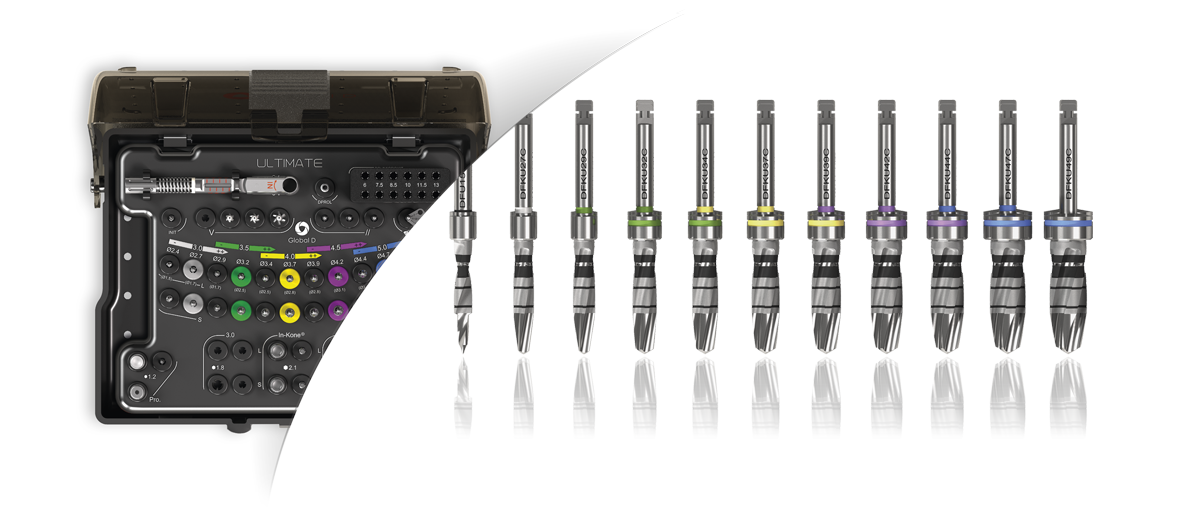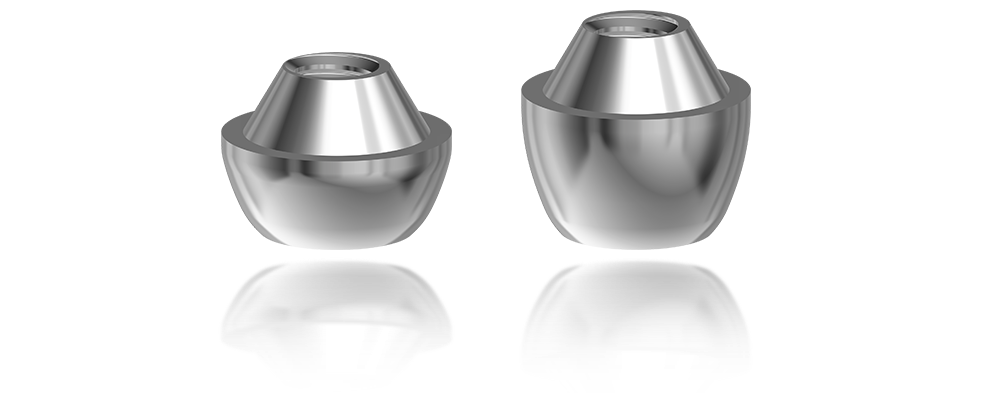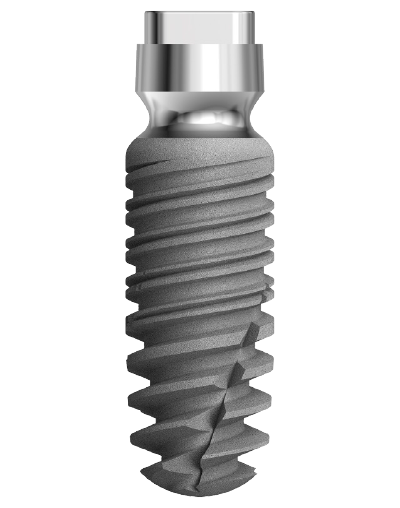The twinKon® implant is a tissue level type of implant.
However, with respect to periodontal status, management of the emergence profile was revised to promote initial formation of a thick mucosal seal in order to act as a natural barrier. The vertical positioning of the implant may be modified slightly according to the periodontal biotype. The prosthetic interface is moved over the mucosal joint; the risk of iatrogenic contamination during prosthetic restoration phases is reduced.
The twinKon® is a Tissue Level type of implant, generally valued for its ability to prevent peri-implant bone loss(1), as well as for in-mouth prosthetic accessibility. The twinKon® is a particularly useful implant in mandibular regions exhibiting moderate to severe atrophy.



